Interview: Brontë Society Operations and Development Manager Matthew Withey on the Brontës’ 200th Anniversary
March 31, 2016
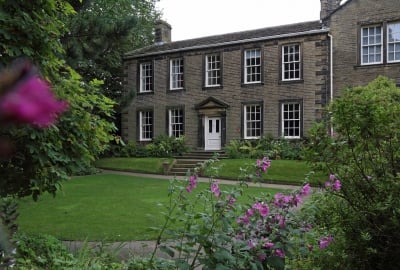
Brontë Parsonage Courtesy of the Brontë Society
2016 sees the start of five years of Brontë 200th anniversary celebrations, marking the births of the sisters and Branwell, with a further year in honour of their father, Patrick Brontë. With the Brontë Society and the Parsonage at the heart of the celebrations, TSOTA’s Mike Farren caught up with Operations and Development Manager, Matthew Withey, to find out what’s in store for admirers of Yorkshire’s greatest literary family.
TSOTA: What is your role?
MW: My title is Operations and Development Manager. I look after the loos and the roof, but the more glamorous side is that I’m Chair of the Bicentenary Planning Committee. I sit at the centre of our planning for programming and events.
TSOTA: Can you describe the relationship between the Brontë Society and the Parsonage?
MW: The Brontë Society own the museum and the staff are their employees, but are seen as having the skills to put together a programme for our membership. We’ve got a really good team working to put together an exciting programme for the bicentenaries over the next five years.
TSOTA: More than most writers, we see the Brontës as rooted in their place. Is it important for the Society to have a base right at the heart of that place?
MW: I’m biased because I work here and I’m looking out across the moors. I don’t believe in ghosts, but there’s a definite sense of presence. The Museum is a very intimate space. We have people visiting from all over the world, on a pilgrimage to where these incredible works of literature were written and felt. There’s a real sense that the landscape infuses the literature itself. I think it’s very important that we recognise Haworth as the base of this extraordinary creative output.
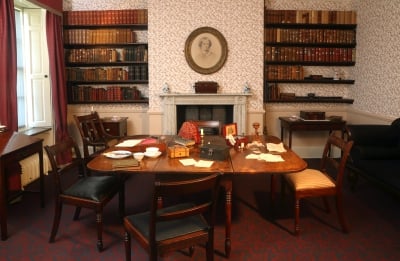
Brontë Parsonage Dining Room Courtesy of the Brontë Society
TSOTA: There will be events going on well beyond Haworth. Is this outreach by the Society, or just that lots of parties want to get involved?
MW: Although the Brontës have global recognition, we’re a small team in a small, out of the way museum, so we would like to encourage other people with their own Brontë projects, and that has worked a treat. There are organisations all round West Yorkshire, Britain, Europe and globally who are doing things in this special year. We are providing a Brontë 200 hub website for people to upload details of their projects. We sit at the centre of what we hope will be a year of celebrations across the world.
There are a few select partnerships we’ve been working on. Probably the most important ones are the National Portrait Gallery in London and the Morgan Library and Museum in New York. But smaller partnerships are equally exciting. There are partnerships leading to delivery of some concrete thing, but others are more about, “You scratch our back and we’ll scratch yours”! Bradford City of Film are going to be using their big screen in City Park for a lot of content from us; The National Media Museum is working on a couple of things with us; there are endless little festivals…
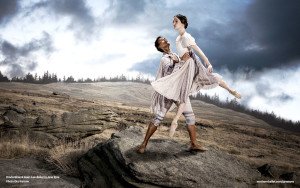
Northern Ballet’s Jane Eyre. Photo: Guy Farrow
Northern Ballet are doing a new production of Jane Eyre. West Yorkshire Playhouse are doing a Charlotte Brontë season. These would probably have happened anyway, but people have consulted and sought endorsement from this organisation. A lot have come to use our library and archive or ask our curators. Two production companies from the BBC have been in, taking measurements of the Parsonage. Sally Wainwright is scripting a biopic on the Brontës, which is due out at the end of the year. We’re very excited about that.
The BBC itself is doing four major broadcasts this year. It’s having its own Charlotte Brontë season. Although that’s not a partnership, we are working very closely with them.
TSOTA: What is Tracy Chevalier’s role as ‘Creative Partner’?
MW: She’s been amazing in opening doors for us, with things like publications with Harper Collins, where notable women authors are writing short stories responding to Jane Eyre.
We’re going to have a presence at some of the bigger literature festivals: the Edinburgh International Book Festival; the Manchester Literature Festival, the Hay Festival and the Cheltenham Literature Festival. A lot of that has come through Tracy herself. She’s got a novel of her own at the moment, so she’s invited us to be in the room with her on the literature festival circuit, while she’s doing Q&A sessions.
Tracy has curated our current exhibition, Charlotte Great and Small. She’s been pulling that show together with our Arts Officer for two years. She also did an exhibition at the Bankfield Museum in Halifax and it was her idea to have a quilting competition, where quilters all over Britain are responding to a quilt that Emily and Charlotte made.
TSOTA: What was behind the decision to spread the Brontë 200 celebrations over 5 years?
MW: Charlotte’s bicentenary is this year, but the Brontës managed to get themselves born in consecutive years. We have Branwell’s bicentenary next year, followed by Emily’s. The year after that, we have a fallow year, and we’re going to use that to celebrate Patrick, the father, then we round it all off with a celebration for Anne in 2020.
A lot of people know the name ‘Brontë’, but find it difficult to distinguish the sisters. The sisters do have this sense of a group, but for us, Charlotte is no more important than Emily, who is no more important than Anne. It’s an opportunity that seems too good to miss. We’re very keen to stay in the public eye for that whole period.
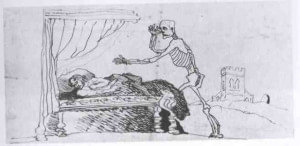
Branwell Brontë’s deathbed drawing
TSOTA: You have dedicated a year to Branwell and another to the father, Patrick, who often seem to be marginal to the Brontë story
MW: The celebrations give us an opportunity to talk about the male family members. Branwell is a very interesting character, very tragic, and romantic and attractive for that reason: very rock’n’roll. He died tragically young.
Patrick, for different reasons, is interesting as well. He’s the patriarch and an extraordinary individual. He encouraged their creativity and their individuality. He was very enlightened on the education of women, and socially, he was a titan for the benefit of people in Haworth, which was a very difficult place for working class people to live at that time.
Charlotte, Emily and Anne are the pillars on this edifice, but in the spaces between, we’ve got an opportunity to talk about the other two.
TSOTA: The Parsonage always has an active programme of events. How will you gear up more for the Brontë 200 programme?
MW: Any museum our size is pressured. They never have enough staff to do all the things they want to do, so it has been difficult, taking that step up. At the same time, I think we have done a good job, and have enlisted the help of other people to generate that kind of buzz.
It’s a really efficient way of working. If I can get local literature festivals – Ilkley, Harrogate, Headingley, Cleckheaton – talking about the Brontës, we benefit as an organisation, because people will be inspired to come along and see the place where it all happened. We’re starting to see that in our visitor figures
TSOTA: Are there any events in 2016 you’re particularly looking forward to?
MW: The birthday party is going to be special. We’re having that in Haworth as a community event. We’re punctuating with music and a competition for children, but we’re also providing cake and bubbly for the local community. We want to belong to that Haworth family and there are a couple of opportunities this year to say thank you.
In July, we’re doing a poetry festival. It will be a completely new event. If we can get representation from a good number of the poetry groups from what seems a very vibrant scene, and we can get them out here on a beautiful sunny weekend, that would be something. Again, we’d like that to be a community event. It will be free to enter and we’d like there to be a real take-up
TSOTA: Is there an outline plan for events after 2016?
MW: We’ve a bit of a breathing space at the moment. We’re doing workshops for staff, trustees and external stakeholders to get across-the-board buy-in on what we want to do.
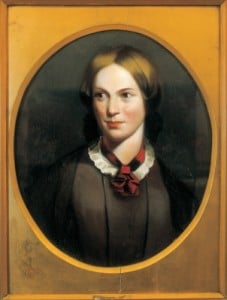
Charlotte Brontë by JH Thompson Courtesy of the Brontë Society
With Charlotte this year, we’ve been very keen to make the organisation attractive and welcoming to young people, because the idea of youth is something that goes right through Charlotte’s story. We’d like to pull out appropriate themes from the other siblings’ lives. For example, with Branwell, we’d like to focus on young men. We don’t attract nearly enough young men to this organisation, so we’d like to develop ideas and projects that reach out to that part of society.
Each year, we would like to do a touring exhibition, based on our collection. We’d like to go to another major British city and a major city overseas. We’d also like to do an art exhibition and a major community project. In between, we’d like to do a lot of smaller events that cover outreach, education, music and things like that.
TSOTA: One of the events, ‘The Great Charlotte Brontë Debate’, aims at uncovering her ‘true masterpiece’. What are your views on that?
MW: I’m going to say Jane Eyre. There are passages of Villette that are sumptuous. I remember when I was first reading Villette, I would leap up and go, “Look at that, that’s amazing!” But Jane Eyre is the daddy!
To find out more about Brontë 200, go to https://www.bronte.org.uk/bronte-200.

Comments